One of my friends recently asked me, “Why do spiders have 8 eyes?” So, I decided to write this blog for those curious to know the answer to this question.
First of all, have you ever wondered why spiders seem to detect even the slightest movement around them? The secret lies in their unique visual system, particularly their multiple eyes. While most animals have just two eyes, spiders have evolved to possess an impressive eight eyes in most cases. This interesting adaptation has fascinated scientists and nature enthusiasts for years, sparking extensive research into spider vision. In this blog post, we’ll dive deep into the world of arachnid optics, exploring why spiders have eight eyes and uncovering the complexity of their visual capabilities. Get ready to see the world through a spider’s eyes—all eight of them!
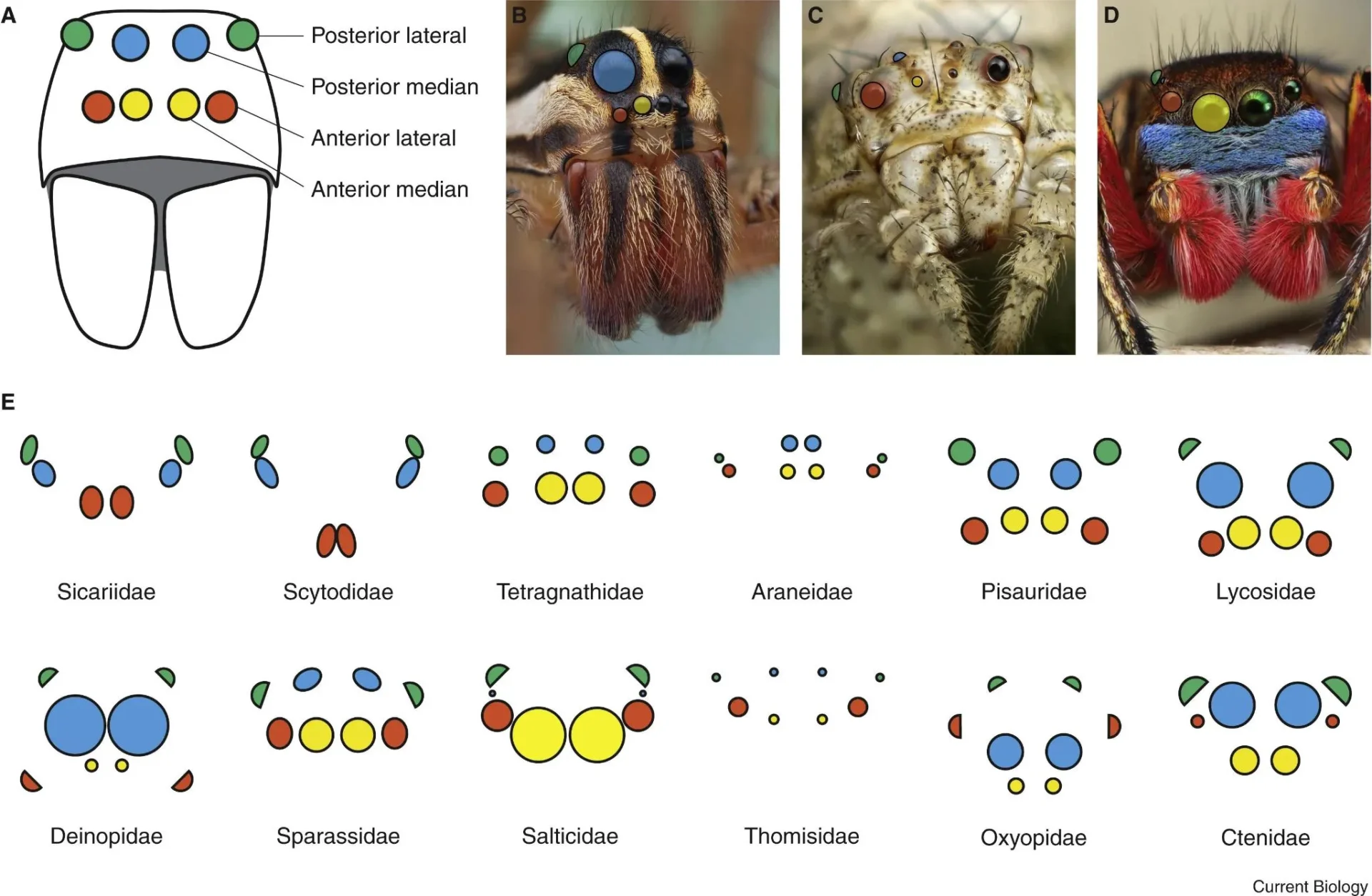
Table of Contents
- The Basics of Spider Eyes
- Anatomy of principal and secondary eyes in spiders
- Why do spiders have 8 eyes?
- The Diversity of Spider Eye Arrangements
- The Incredible Capabilities of Spider Vision
- The Evolution of Spider Eyes
- Spider Vision vs Human Vision
- The Impact of Spider Vision on Web Design
- Frequently Asked Questions
- Conclusion
The Basics of Spider Eyes
Before we explore the reasons behind “Why do spiders have 8 eyes” and spiders’ octo-ocular setup, let’s first understand the basics of spider eyes. Unlike the complex, image-forming eyes of humans and many other animals, spider eyes are typically simple structures called ocelli. These ocelli are divided into two main types:
- Principal eyes (also called anterior median eyes or AMEs)
- Secondary eyes (including anterior lateral eyes, posterior median eyes, and posterior lateral eyes)
The principal eyes are usually the largest and most conspicuous, often appearing as a pair of big, forward-facing eyes. These eyes are responsible for forming images and detecting colors. The secondary eyes, on the other hand, are typically smaller and are mainly used for detecting movement and changes in light intensity.
Anatomy of principal and secondary eyes in spiders
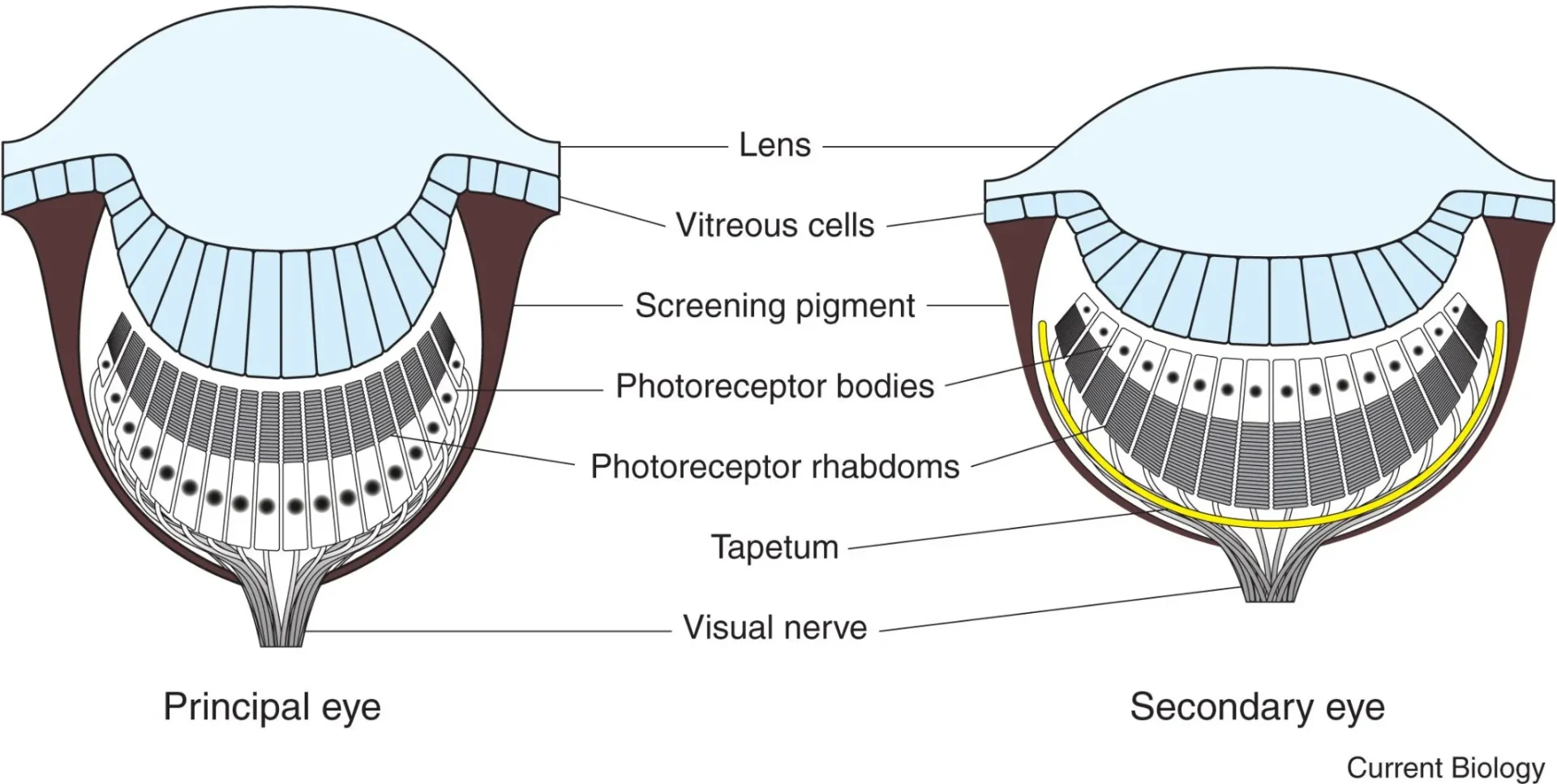
Why do spiders have 8 eyes?
Now, onto the burning question: why do spiders have eight eyes? The answer lies in their unique lifestyle and hunting strategies. Here are the main reasons:
1. Enhanced Field of Vision
Spiders have eyes positioned around their head, which allows them to achieve an almost 360-degree field of view. This panoramic vision is essential for detecting potential prey or predators from any direction, enhancing their chances of survival in various environments.
2. Specialization of Function
Each pair of eyes on a spider serves a specific purpose. The principal eyes are adapted for focusing on detail and color, which helps in identifying prey and navigating complex environments. The secondary eyes, on the other hand, are excellent at detecting motion and changes in light intensity. This specialization allows spiders to efficiently process a wide range of visual information.
3. Adaptation to Various Habitats
Spiders can be found in diverse environments, from dark caves to bright, sunny meadows. Having multiple eyes with different capabilities helps them adapt to varying lighting conditions and hunting scenarios. For example, some spiders are active during the day, while others hunt at night; their eyes are adapted to their specific needs.
4. Compensation for Limited Eye Movement
Unlike many animals, spiders cannot move their eyes. To compensate for this limitation, they have multiple fixed eyes that can gather visual information from different angles. This setup allows them to observe their surroundings without the need to move their entire body, which can be especially useful for stealthy hunting.
5. Improved Depth Perception
The arrangement of multiple eyes also helps spiders with depth perception, which is crucial for accurately judging distances when building webs or pouncing on prey. This ability to gauge distance precisely enables them to be effective hunters, whether they’re jumping to capture insects or setting up a web to catch flying prey.
In summary, spiders have eight eyes because this setup provides them with a comprehensive visual system tailored to their predatory lifestyle, enabling them to thrive in various habitats and hunting situations.
The Diversity of Spider Eye Arrangements
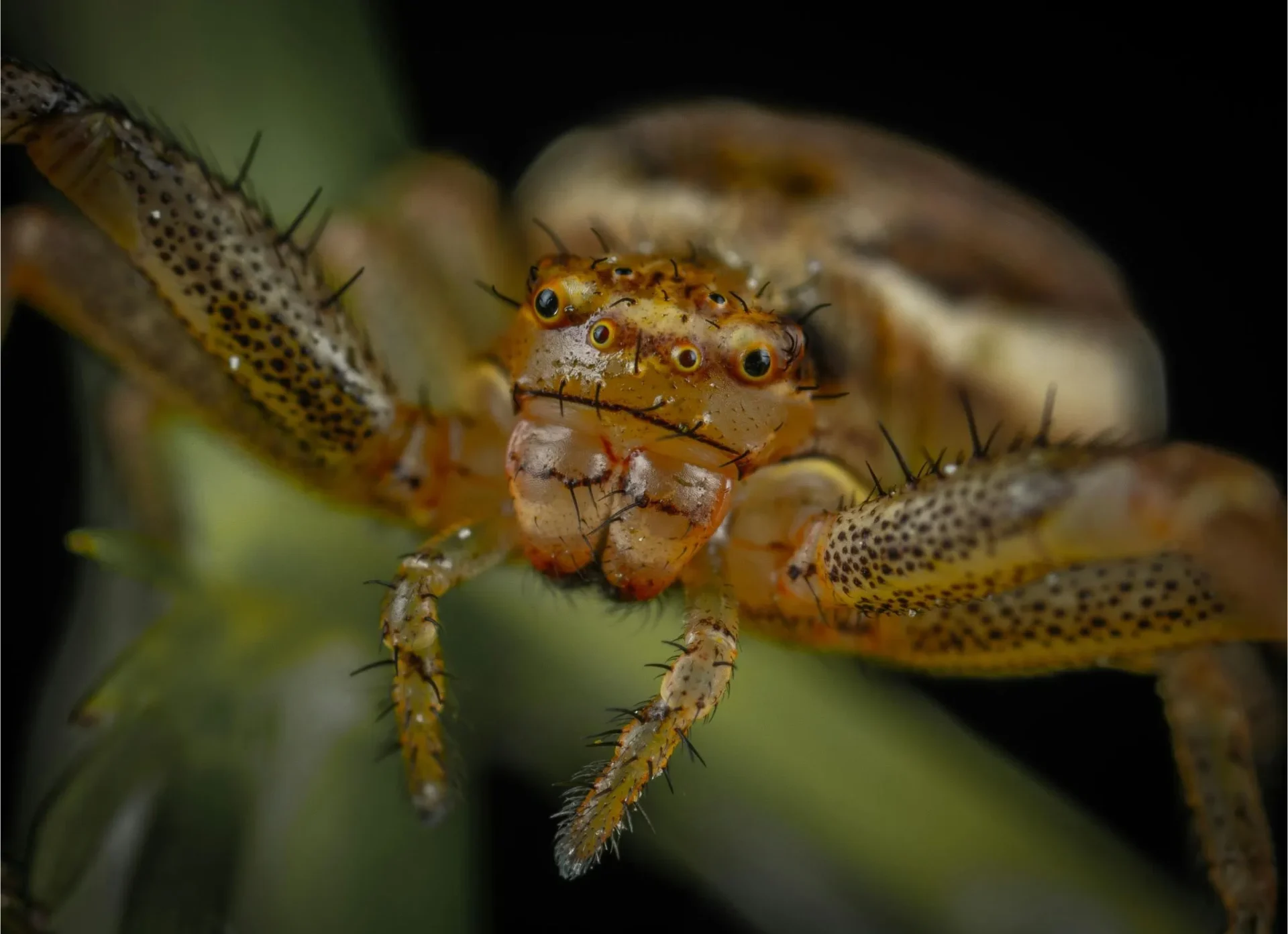
While eight is the most common number of eyes in spiders, it’s not a universal rule. Spider eye arrangements can vary significantly across different species:
- Some spiders, like the brown recluse, have only six eyes.
- Certain cave-dwelling spiders have evolved to have no eyes at all.
- The ogre-faced spider has enormous principal eyes that take up most of its head, giving it excellent night vision.
- Jumping spiders have a unique eye arrangement that provides them with exceptional visual acuity, rivaling that of primates relative to their size.
These variations in eye number and arrangement demonstrate how spiders have adapted their visual systems to suit their specific ecological niches and hunting strategies.
The Incredible Capabilities of Spider Vision
Now that we understand why spiders have multiple eyes, let’s explore some of the remarkable abilities of their visual system:
1. Diverse Eye Arrangements
Most spiders boast eight eyes, but the configuration and size of these eyes vary significantly across species. This diversity in eye arrangement allows different spider species to adapt to their specific habitats and hunting techniques. For instance:
- Jumping spiders have large forward-facing principal eyes for acute vision and smaller secondary eyes for peripheral awareness.
- Web-building spiders often have smaller eyes optimized for detecting movement and changes in light.
- Some cave-dwelling species have reduced or even lost their eyes entirely, adapting to life in darkness.
2. Exceptional Motion Detection
One of the most impressive aspects of spider vision is their ability to detect motion. The secondary eyes of spiders are highly sensitive to movement, allowing them to:
- Spot potential prey or predators even in low light conditions
- React quickly to changes in their environment
- Detect the slightest vibrations in their webs (for web-building species)
This keen motion detection is crucial for survival, whether the spider is an active hunter or a web-building ambush predator.
3. Color Perception
Contrary to popular belief, many spiders can see colors. Research has shown that:
- Jumping spiders, in particular, have tetrachromatic vision, meaning they have four types of color receptors.
- These spiders can perceive a wide spectrum of colors, including some in the ultraviolet range invisible to human eyes.
- Color vision aids in mate selection, prey identification, and navigation.
4. Pattern Recognition
Some spider species, especially jumping spiders, demonstrate an impressive ability to recognize complex patterns. This capability goes beyond simple shape detection and allows them to:
- Distinguish between different types of prey
- Recognize potential mates
- Navigate complex environments
5. Exceptional Night Vision
Many nocturnal spider species have evolved remarkable adaptations for low-light vision:
- Large principal eyes that act like night-vision goggles
- Highly sensitive light-gathering structures within the eyes
- Neural adaptations that enhance visual processing in dim conditions
For example, the ogre-faced spider has enormous principal eyes that allow it to hunt effectively in near-total darkness.
6. Polarized Light Detection
Some spiders have the fascinating ability to detect polarized light. This skill serves multiple purposes:
- Navigation using the polarization pattern of the sky
- Locating suitable web-building sites
- Potentially communicating with other spiders
7. Remarkable Visual Acuity
Certain spider species, particularly jumping spiders, possess visual acuity that rivals that of primates when adjusted for their size. This sharp vision enables them to:
- Accurately judge distances for precise jumping
- Identify small prey from relatively far away
- Navigate complex three-dimensional environments
8. Wide Field of View
Many spider species enjoy an incredibly wide field of view, often approaching 360 degrees. This panoramic vision provides several advantages:
- Constant awareness of their surroundings
- Improved ability to detect potential threats or prey
- Enhanced navigation in complex environments
9. Efficient Visual Processing
Despite their small size, spiders can process complex visual information quickly and efficiently. Their neural architecture allows for:
- Rapid integration of visual data from multiple eyes
- Quick decision-making based on visual input
- Efficient use of limited neural resources for maximum visual performance
10. Specialized Adaptations
Some spider species have developed unique visual adaptations for their specific lifestyles:
- Net-casting spiders have ultra-sensitive eyes for hunting in extreme low-light conditions
- Some crab spiders can rapidly change color to match their surroundings, a process guided by visual input
- Certain water spiders have adapted eyes for seeing clearly both above and below the water’s surface
The Evolution of Spider Eyes

The interesting topic of spider eye evolution provides an understanding of how these arachnids developed their unique visual system. Researchers believe that the ancestor of today’s spiders most likely possessed two lateral eyes, one on each side of the head. These eyes separated and became more specialized over millions of years, finally giving rise to the vast array of eye arrangements that we find in modern spiders.
This evolutionary process has been driven by various factors:
- Predation Pressure: The need to detect prey and avoid predators likely played a significant role in the development of multiple eyes and enhanced visual capabilities.
- Habitat Diversification: As spiders colonized different environments, their eyes adapted to suit specific light conditions and hunting strategies.
- Web-Building Specialization: The evolution of web-building behavior may have influenced eye development, as different eye arrangements could provide advantages in web construction and prey detection.
- Sexual Selection: In some spider species, elaborate courtship displays have led to the evolution of enhanced color vision and pattern recognition abilities.
Spider Vision vs Human Vision
It’s important to compare spider vision with our own visual system in order to fully understand how special it is:
- Field of View: Spiders’ field of vision is far larger than that of humans, almost 360 degrees. In comparison, the field of vision of humans measures about 180 degrees.
- Color Perception: Certain spiders, such as jumping spiders, have tetrachromatic vision (four types of color receptors), which enables them to see a wider range of colors, including UV, in contrast to humans who have trichromatic vision (three types of color receptors).
- Motion Detection: Spiders generally excel at detecting motion, even in low light conditions, surpassing human capabilities in this area.
- Visual Acuity: Human eyes typically have better resolution and can form sharper images than most spider eyes. However, some jumping spiders have remarkably high visual acuity for their size.
- Eye Movement: Humans can move their eyes to focus on different objects, while spiders must move their entire body to change their visual focus.
The Impact of Spider Vision on Web Design
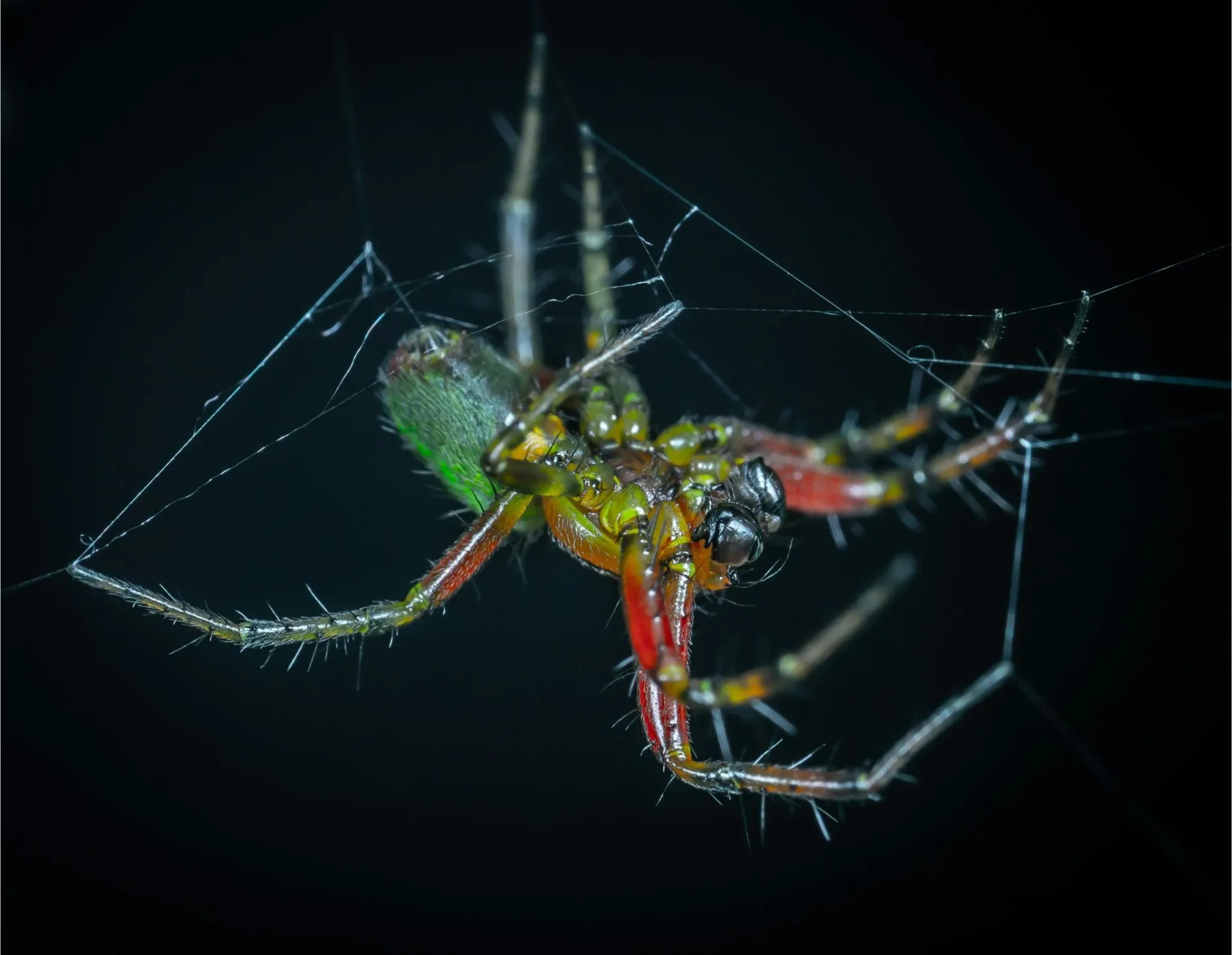
The unique visual capabilities of spiders have had a significant influence on the evolution of web design. Different spider species have developed web structures that complement their visual strengths:
- Orb Weavers: These spiders, known for their classic spiral webs, rely heavily on vibrations to detect prey. Their eyes are adapted to detect movement at the web’s edges.
- Crab Spiders: These spiders are ambush predators that rely on hiding and rapid reflexes rather than building webs, thanks to their widely separated eyes.
- Net-Casting Spiders: These spiders have enormous principal eyes that allow them to see in extremely low light conditions. They hold a small web between their front legs and drop it onto passing prey.
- Jumping Spiders: These spiders have exceptional vision, therefore they don’t require webs. Rather, they actively search for and attack their prey.
Frequently Asked Questions (FAQs)
Q1: Can spiders see as well as humans?
A: While spider vision is impressive in many ways, it’s generally not as sharp as human vision. However, some jumping spiders have visual acuity approaching that of humans in relation to their size.
Q2: Do all spider eyes work the same way?
A: No, spider eyes have different functions. The principal eyes form images and detect color, while secondary eyes primarily detect motion and light changes.
Q3: Can spiders see in the dark?
A: Many spider species have excellent night vision, with eyes adapted to gather as much light as possible in low-light conditions.
Q4: Do spiders have binocular vision?
A: Some spiders, particularly jumping spiders, have a degree of binocular vision that allows for depth perception.
Q5: Can spiders recognize human faces?
A: While spiders can detect human movement, there’s no evidence to suggest they can recognize individual human faces.
Conclusion
Spiders typically have 8 eyes to enhance their survival and hunting abilities. This unique eye arrangement provides several advantages:
- Wide field of vision, often nearly 360 degrees
- Improved motion detection for spotting prey and predators
- Better depth perception for accurate jumping and web-building
- Specialized functions: principal eyes for detail and color, secondary eyes for movement
- Adaptation to various light conditions and habitats
While not all spiders have exactly 8 eyes, this common configuration has proven highly successful through millions of years of evolution. It allows spiders to effectively navigate their environment, capture prey, and avoid threats. The next time you encounter a spider, remember that its multiple eyes are not just a quirk of nature, but a finely tuned survival tool.
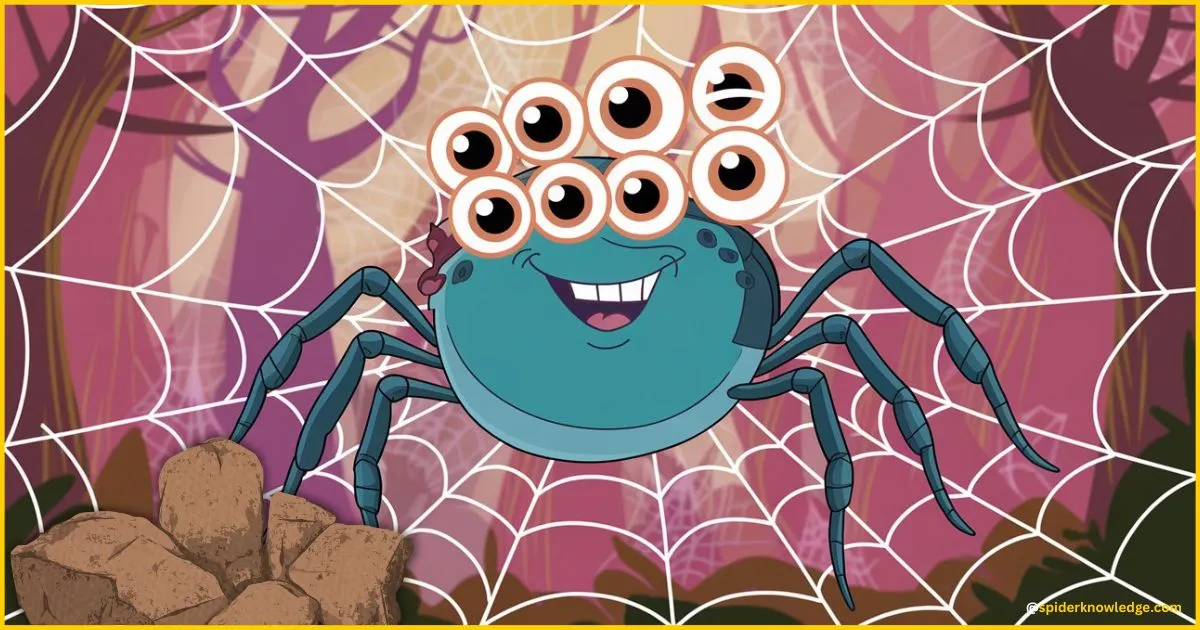
“This post has helped me solve my issue, thanks a ton!”
Thank you! Keep reading:)
“Outstanding post! The research quality and clarity blew me away. The way you’ve structured each point shows your deep understanding of the topic. I’ve learned so much from your expert insights.”
Thank you! Keep reading:)
“Thanks for sharing such valuable information!”
Thank you! Keep reading:)
“I agree with your points, very insightful!”
Thank you! Keep reading:)
“Great content, learned a lot from this post!”
Thank you! Keep reading:)
An impressive share, I just given this onto a colleague who was doing a little analysis on this. And he in fact bought me breakfast because I found it for him.. smile. So let me reword that: Thnx for the treat! But yeah Thnkx for spending the time to discuss this, I feel strongly about it and love reading more on this topic. If possible, as you become expertise, would you mind updating your blog with more details? It is highly helpful for me. Big thumb up for this blog post!